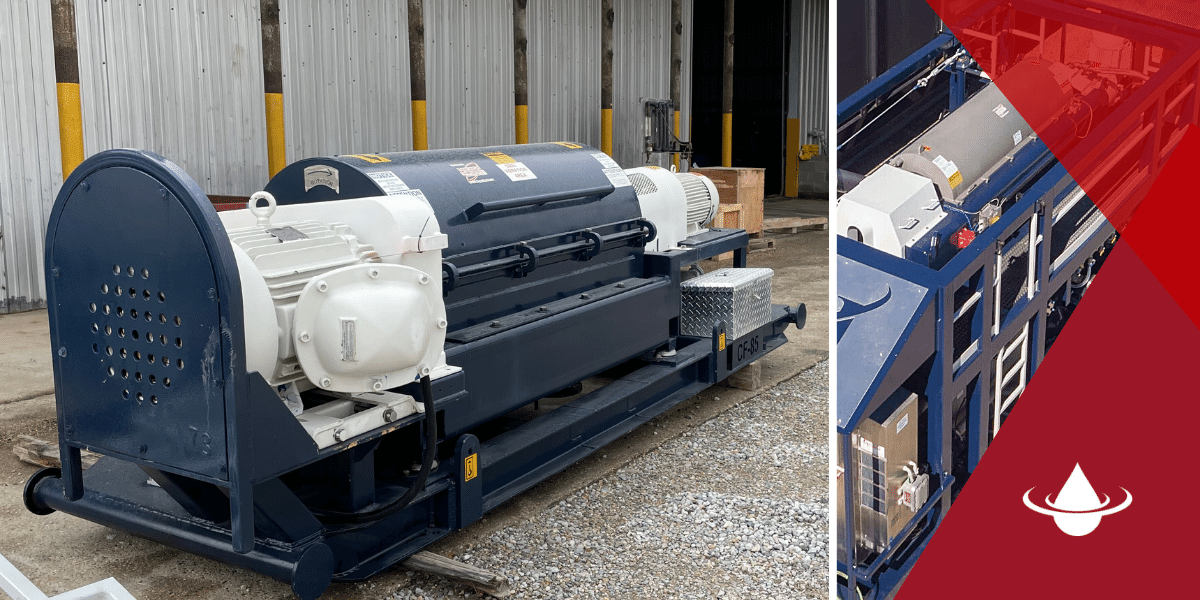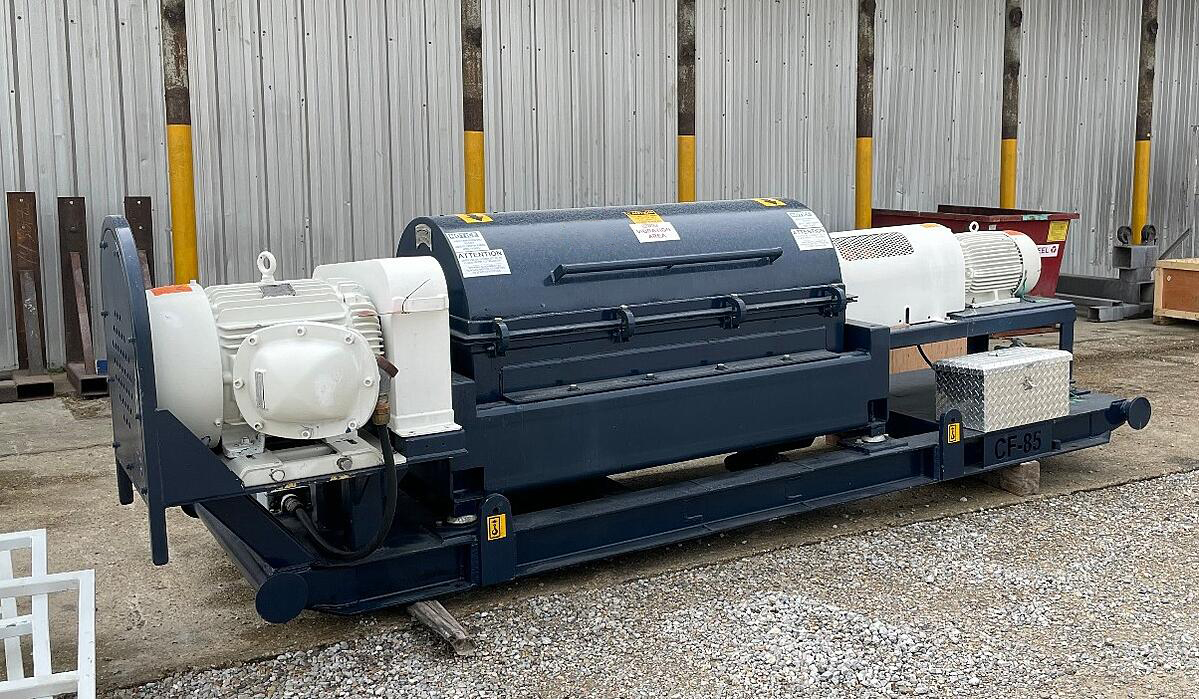Everything You Need To Know About A Decanter Centrifuge
In order to fully understand how a decanter centrifuge operates, we must first define what a centrifuge does. In many industrial jobs, solid material...
4 min read
IFM Team
Mar 1, 2021 12:00:00 AM

The main difference between decanter and tricanter centrifuges is that the tricanter centrifuge not only separates solids from liquids but also separates two phases of liquids from one another.
Here's more on how each centrifuge works and what to expect from each system.
A decanter centrifuge is useful in that it separates solids and liquids, and has become an essential component of water waste facilities, oil reclamation, oil and gas drilling, manufacturing and food processing industries, as well as the hemp manufacturing industry.
There are several types of decanter centrifuges currently utilized in industry, the most common of which are vertical and horizontal centrifuges. The principle behind a decanter centrifuge is based on the theory of gravitational separation.
A decanter centrifuge employs the principles of gravitational force. Continuous rotation provides anywhere from 1000 to 4000 times the normal gravitational force, reducing the time required for separation from hours to seconds.
The concept of rotational separation is similar to rides found at amusement parks and county fairgrounds. In these rides, placing yourself at an angle allows you to overcome the gravitational forces induced by rotation.
A decanter centrifuge is ultimately a bowl tube that rotates at an extremely high speed. The bowl tube is equipped with an internal conveyor which moves in the same direction but at a different velocity, pushing the solids out of the centrifuge.
The use of decanter centrifuges for a two-phase separation may have several pros and cons.
Decanter centrifuges have a clean appearance and have little odor problems.
Not only is the device easy to install and fast at starting up and shutting down, but also only requires a small area for operation compared to other competitive processes.
The decanter centrifuge, as well as the 3 Phase Centrifuge, is versatile as different lengths of the cylindrical bowl section and the cone angle can be selected for different applications.
Also the system can be pre-programmed using automation to predict the sludge type, while some competitive processes, such as a belt filter press, cannot change the belt type to operate for different sludge types. Its versatility allows the machine to have various functions, such as operating for thickening or dewatering.
The machine can operate with a higher throughput capacity than smaller dewatering machines. This also reduces the number of units required.
Compared to some competitive processes such as the belt filter process, the decanter centrifuge has more process flexibility and higher levels of performance.
Decanter centrifuges are simple to optimize and operate, as they have few major variables and reliable feedback information.
Industrial Fluid Management can help with training your operators on proper operation.
The decanter centrifuge has reduced labor costs compared to other processes, as it requires low continuous maintenance and operator attention.
The decanter centrifuge cannot separate biological solids with very small density differences, such as cells and viruses.
The machine can be very noisy and can cause vibration.
The device has a high-energy consumption due to high G-forces.
The decanter centrifuge has high equipment capital costs. Hard surfacing and abrasion protection materials are required for the scroll to reduce wear and therefore reduce the maintenance of the scroll wear.
In the typical separation process, solids are separated from liquids. This scenario can often be accomplished by using a decanter centrifuge. However, in some situations, there are 2 liquids of different densities that need to be separated in addition to the solids.
Enter the right solution: tricanter centrifuges (also known as 3-phase centrifuges).
Tricanter centrifuges allow for continuous separation of three phases (solid-liquid-liquid) in one process. Having a continuous separation of three phases in a single process is extremely beneficial in many applications where there is value in recovering a particular product or products from a multi-phased mixture.
Tricanter centrifuges are useful separating solids and two liquids of different densities, and are valuable components of the tank cleaning, oil processing, metal recycling, and hemp industries just to name a few. Tricanters allow these industries to separate out components of a mixture of solid and 2 liquids of different densities, such as oil and water.
Moreover, with a centrifuge, companies operating in these industries are more efficient and can provide a beneficial return of valuable materials through 3-phase separation.
The use of tricanter centrifuges for a three-phase separation may have several pros and cons.
Tricanter centrifuges allow for faster and more efficient separation than other technologies such as settling tanks and skimmers.
Not only is the device easy to install and fast at starting up and shutting down, but also requires a small area for operation compared to other competitive processes.
Tricanter centrifuges (3 Phase Centrifuge) are versatile, different diameters of the cylindrical bowl section and the cone angle can be selected for different applications.
Also, centrifuge technology allows for adjustments in processing and bowl speed to improve separation and provide a cleaner product on the back end of the process. Other competitive technologies don’t allow for this fine tuning.
Depending on the size of the machine, centrifuges can offer a higher throughput than other technologies.
The machine can be very noisy.
The device has a high-energy consumption due to large motors and pumps needed to run the unit.
The tricanter centrifuge has high equipment capital costs. But with this cost comes increased efficiency, allowing this cost to be recovered over time.
Both, decanter and tricanter centrifuges, use high rotational speeds to separate components of different densities. The principle of a decanter centrifuge is to separate solids materials from liquids in a slurry.
The rotational speed is typically between 2500 and 5000 rpm depending on the diameter of the decanter. This creates a G force which varies based on bowl size and speed.
Both decanter and tricanter centrifuges have very similar extraction processes. Using G Force and physical movement of a conveyor to move solids to one end and liquids to another.
The main difference between a decanter and tricanter is on the liquid end of the machine. In a tricanter, oil tubes are used to extract oil from the most internal layer of the 2 liquids, due to its lower density. The water is removed through the liquid end just as it is in a decanter centrifuge.
Are you interested in getting more information on Industrial Fluid Management 2-Phase or 3-Phase Centrifuge Packages?
Contact us today! Our company’s continued success and rapid development are due to our ability to provide our clients with top-notch specialty service and excellent value on quality centrifuges.
Are you interested in renting a 2-phase or 3-phase centrifuge? Industrial Fluid Management has 2-phase and 3-phase centrifuge rental packages available for rent, as well as for sale.

In order to fully understand how a decanter centrifuge operates, we must first define what a centrifuge does. In many industrial jobs, solid material...

Today's separation and dewatering industries offer two basic dewatering technologies: belt filter presses and centrifuges. Choosing between a belt...

The main difference between decanter and tricanter centrifuges is that the tricanter centrifuge not only separates solids from liquids but also...